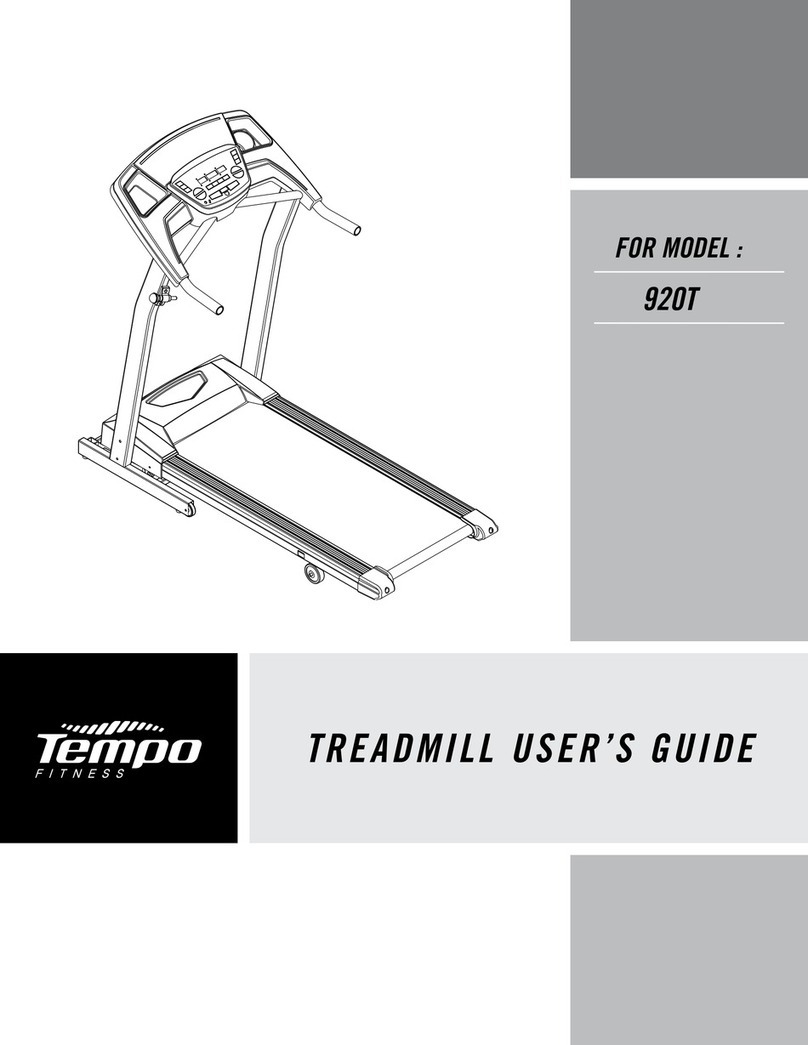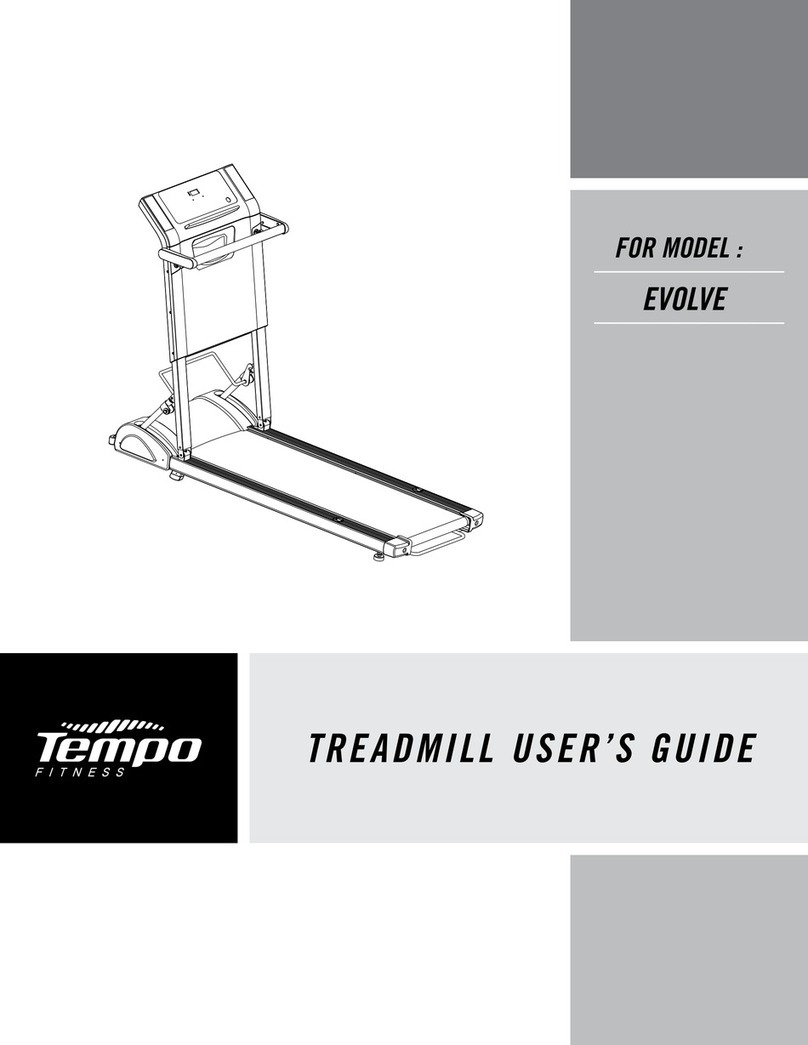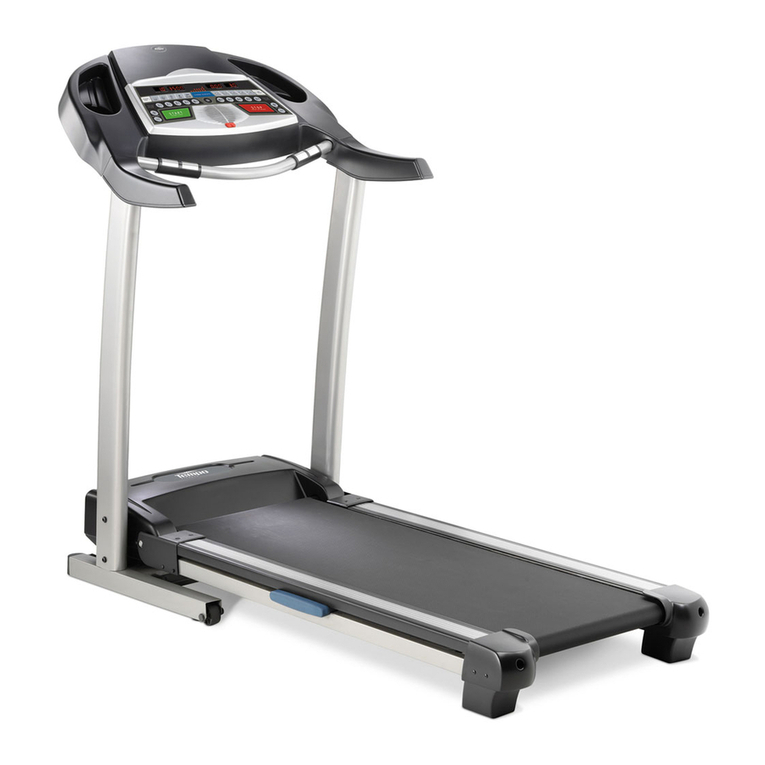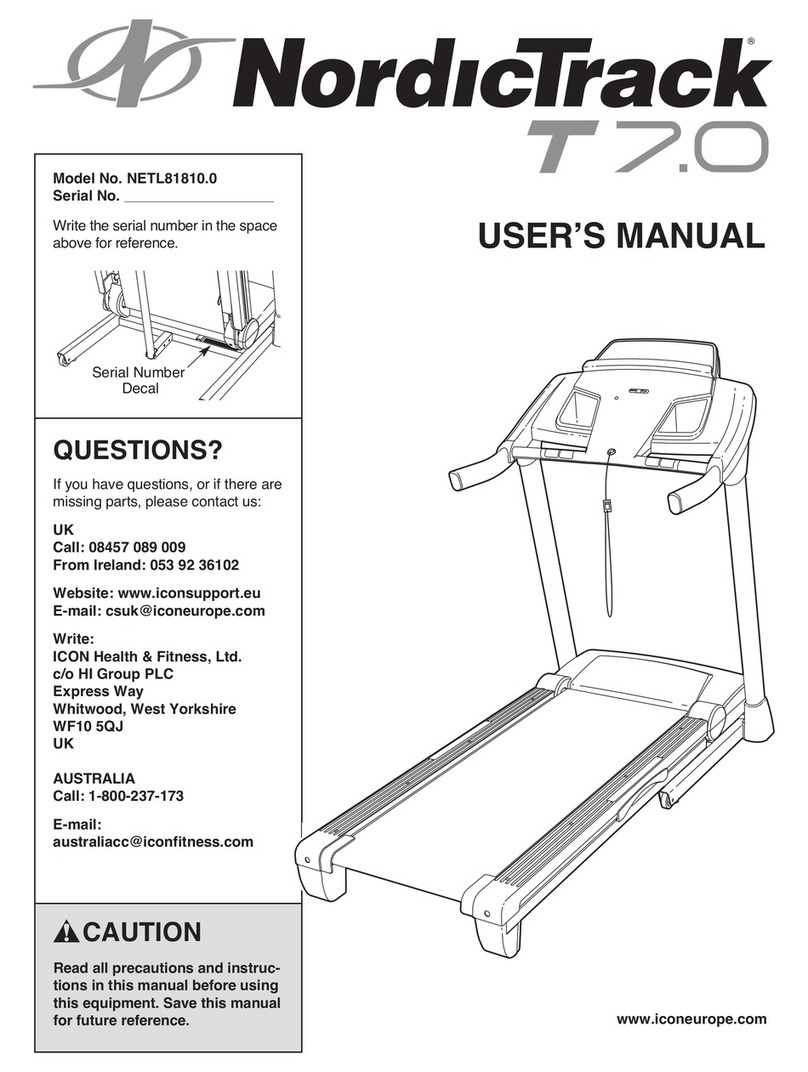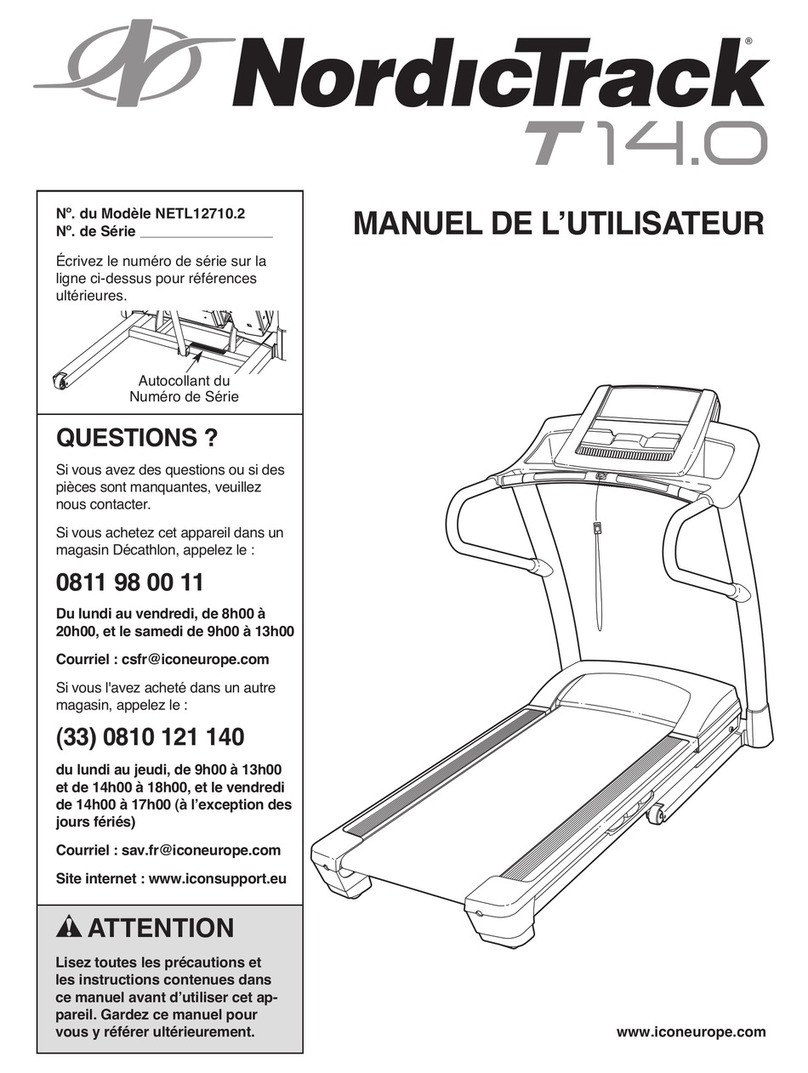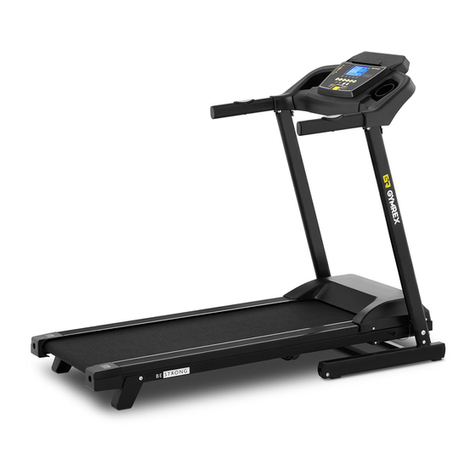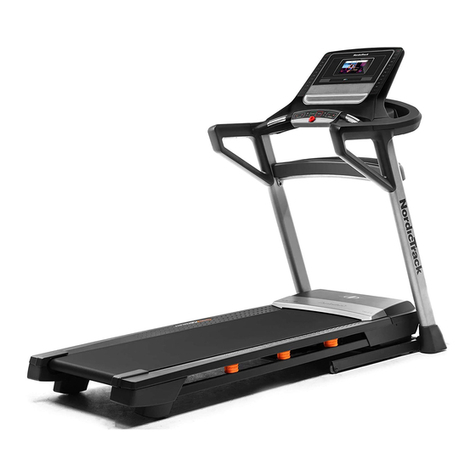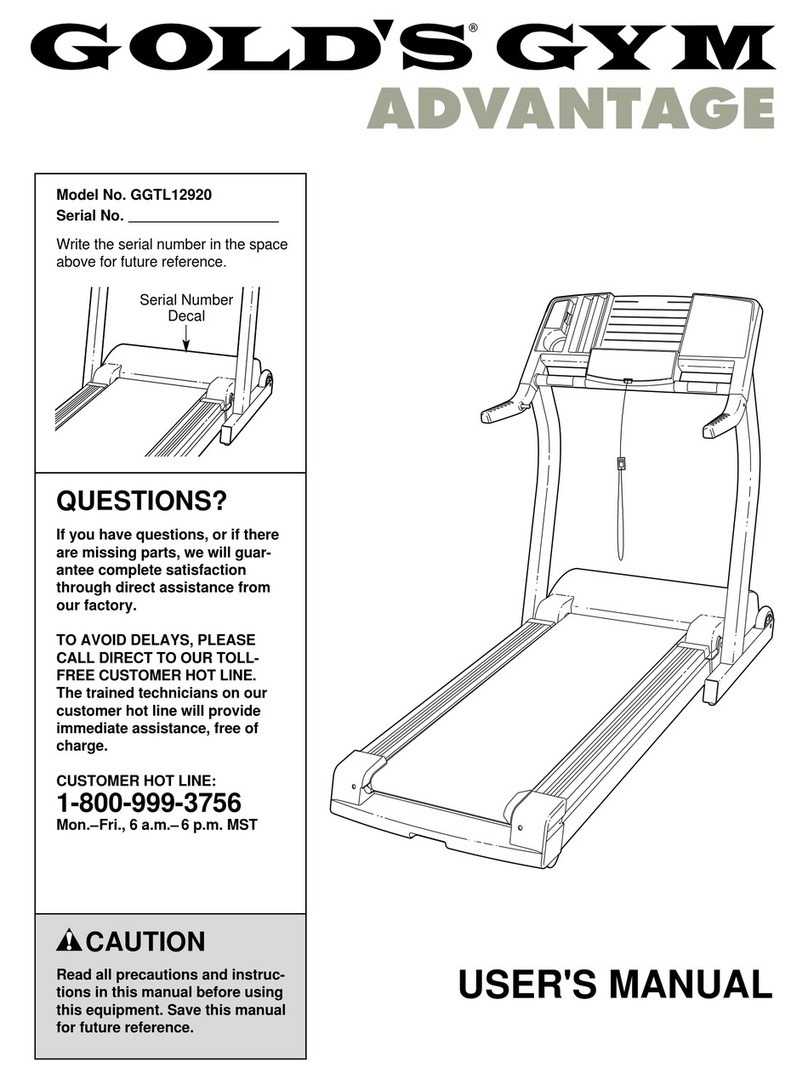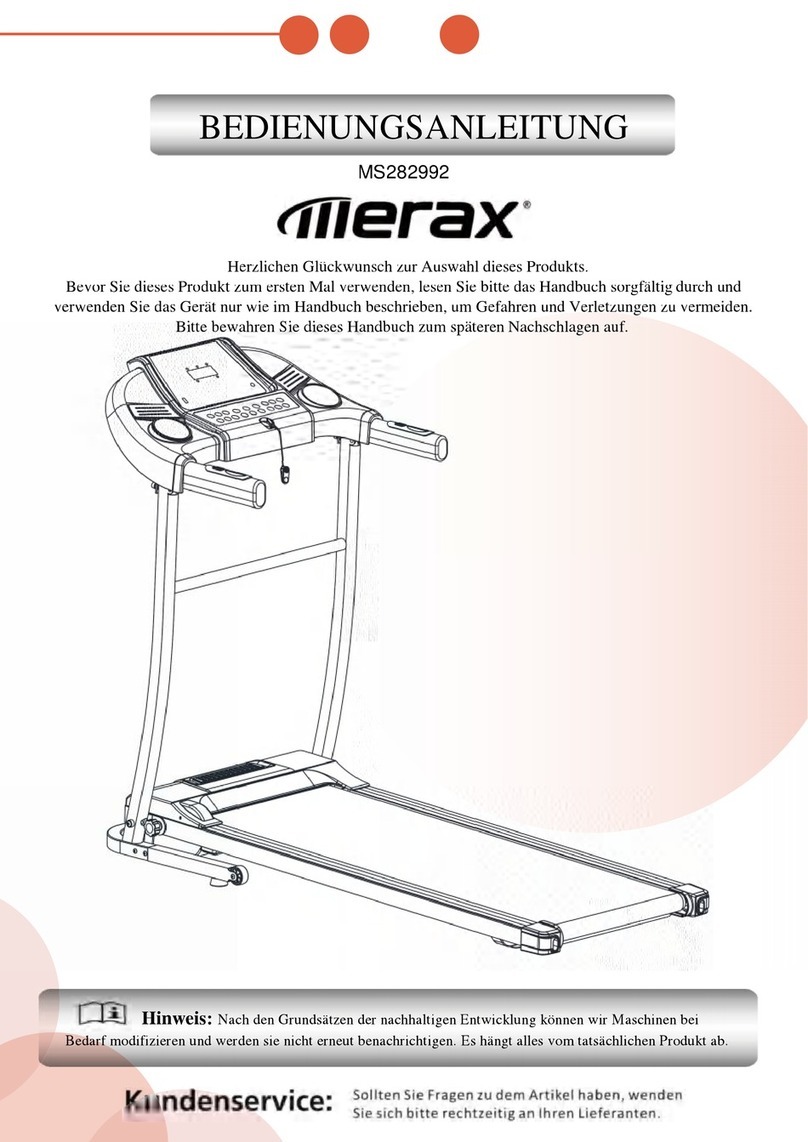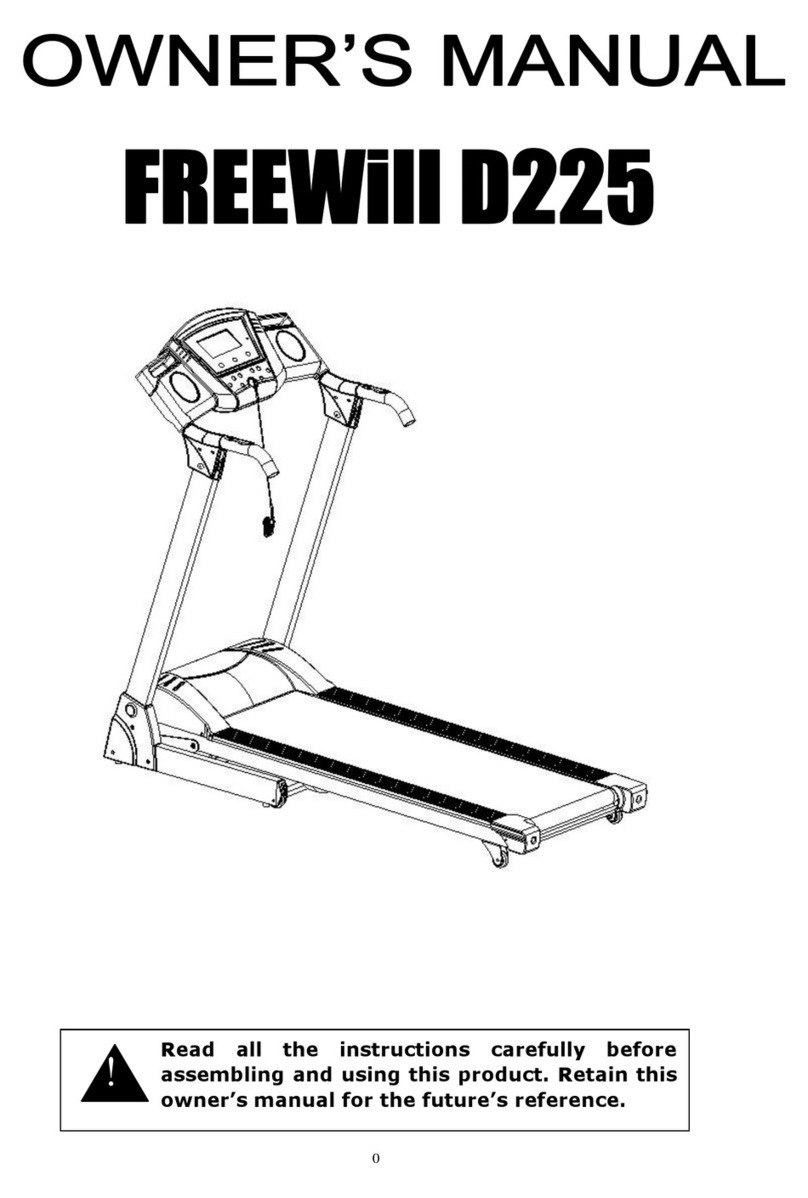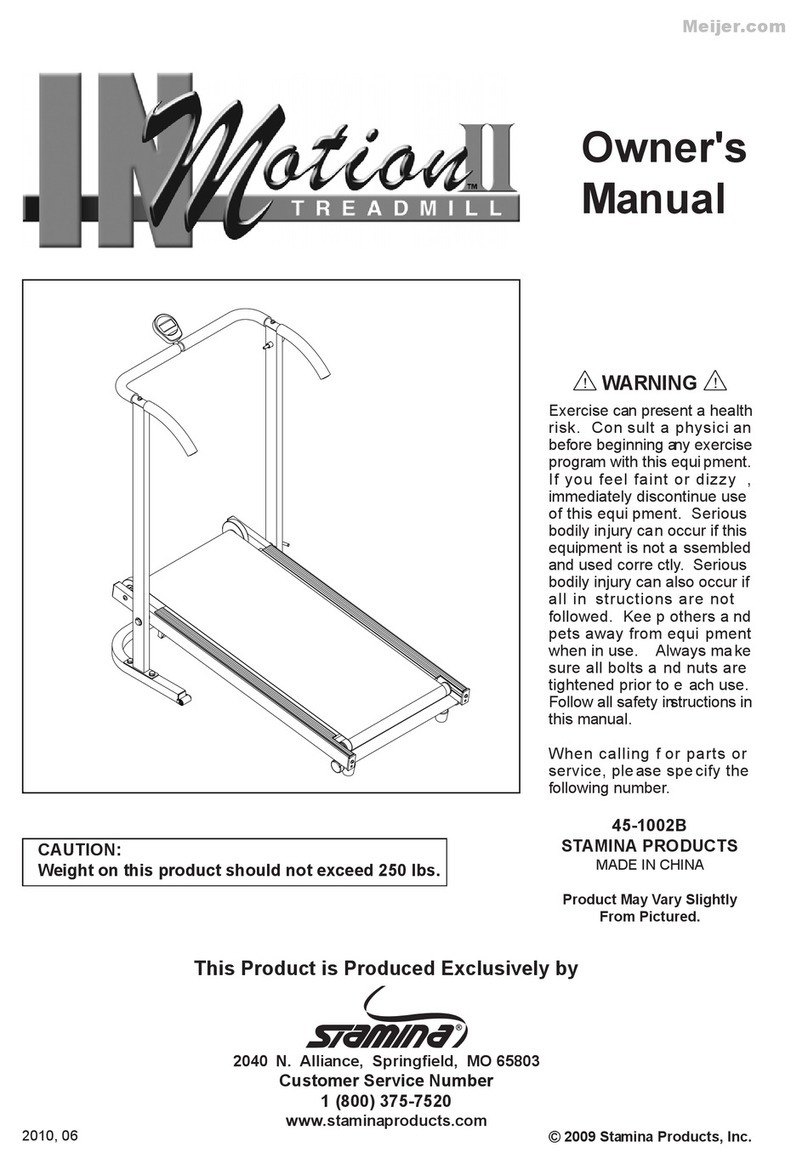8 9
The running belt has been properly adjusted at the factory
before it was shipped. At times the belt can move off-center
during shipment.
If you can feel a slipping sensation when running on the
treadmill, the running belt must be tightened. In most cases,
the belt has stretched from use, causing the belt to slip. This is
a normal and common adjustment. To eliminate this slipping,
turn the treadmill off and tension both the rear roller bolts using
the supplied Allen wrench, turning them ¼ turn to the right as
shown. Turn the treadmill on and check for slipping. Repeat if
necessary, but never turn the roller bolts more than ¼ turn at
a time. Belt is properly tensioned when the slipping sensation
is gone.
LEVELING THE TREADMILL
Your treadmill should be leveled for optimum use. Once you have placed your treadmill where you intend to
use it, raise or lower one or both of the adjustable levelers located on the bottom of the treadmill frame*. A
carpenter’s level is recommended. If your treadmill is not level, the running belt may not track properly. Once you
have leveled your treadmill, lock the levelers in place by tightening the nuts against the frame (Some treadmills
do not have levelers).
WARNING WARNING
Running belt should NOT be moving during tensioning.
Over-tightening the running belt can cause excessive wear
on the treadmill as well as its components. Never over-
tighten the belt.
Do not run belt faster than 1 mph or 1.6 kmh while centering.
Keep fingers, hair and clothing away from belt at all times.
TIGHTENS RIGHT SIDE OF ROLLER
BELT IS TOO FAR TO THE RIGHT SIDE
TIGHTENS LEFT SIDE OF ROLLER
BELT IS TOO FAR TO THE LEFT SIDE
ADJUST
HEIGHT LOCK
ADJUSTMENT
The running belt has been properly adjusted at the factory
before it was shipped. At times the belt can move off-center
during shipment. Before operating the treadmill, make
sure the belt is centered and remains centered to maintain
smooth operation.
If the running belt is too far to the right side: With the treadmill
running at 1 mph, turn the left adjustment bolt counter-
clockwise ¼ turn at a time (using the supplied Allen wrench).
Check the belt alignment. Allow belt to run a full cycle to
gauge if more adjustment is needed. Repeat if necessary,
until the belt remains centered during use.
If the running belt is too far to the left side: With the treadmill
running at 1 mph or 1.6 kmh, turn the right adjustment bolt
counter-clockwise ¼ turn at a time (using the supplied Allen
wrench). Check the belt alignment. Allow belt to run a full
cycle to gauge if more adjustment is needed. Repeat if
necessary, until the belt remains centered during use.
*NOTE: Folding, moving and leveling information might vary according to the model you buy. Please see
Owner’s manual for further information.
The heart rate function on this product is not a medical device. While heart rate grips or a thumb pulse
sensor can provide a relative estimation of your actual heart rate, they should not be relied on when accurate
readings are necessary. Some people, including those in a cardiac rehab program, may benefit from using
an alternate heart rate monitoring system like a chest or wrist strap. Various factors, including movement of
the user, may affect the accuracy of your heart rate reading. The heart rate reading is intended only as an
exercise aid in determining heart rate trends in general. Please consult your physician.
Your treadmill could be equipped with either heart rate pulse grips or a thumb pulse sensor. To find out what your
model has, refer to the beginning of the assembly section of your owner’s manual.
PULSE GRIPS
Place the palm of your hands directly on the grip pulse handlebars. Both hands must grip the bars for your
heart rate to register. It takes 5 consecutive heart beats (15-20 seconds) for your heart rate to register. When
gripping the pulse handlebars, do not grip tightly. Holding the grips tightly may elevate your blood pressure.
Keep a loose, cupping hold. You may experience an erratic readout if consistently holding the grip pulse
handlebars. Make sure to clean the pulse sensors to ensure proper contact can be maintained.
Always stand still on side rails when measuring your heart rate. Checking your heart
rate while in motion will cause inaccurate readings. Do not press excessively hard
on the sensor as this may cause damage.
WARNING
TENSIONING THE RUNNING BELT CENTERING THE RUNNING BELT
USING THE HEART RATE FUNCTION
